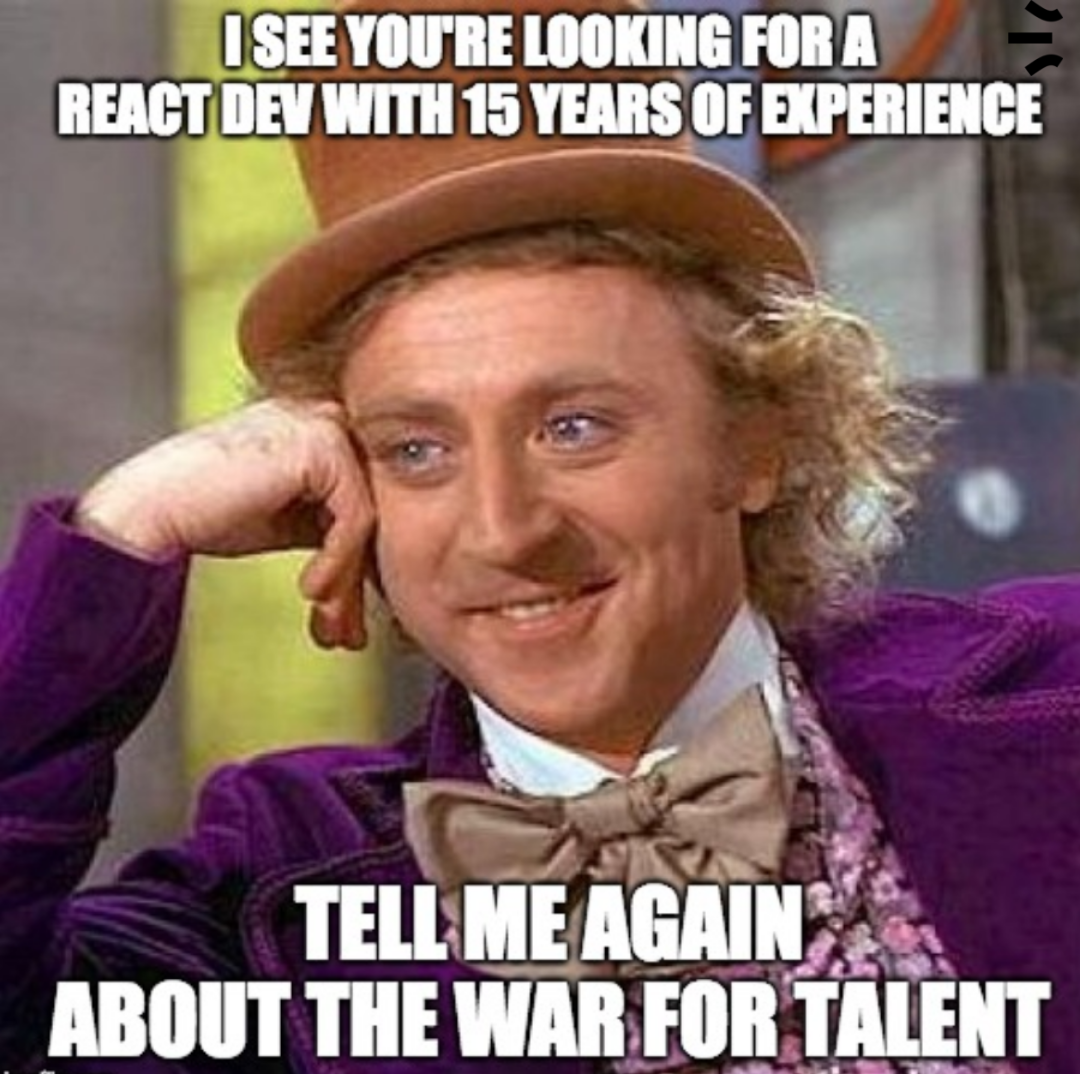Why Can’t I Find A Senior Full Stack Developer?
TLDR: The term “full stack developer” didn’t exist in 2015 so how can senior full stack developers exist in 2019…?

The term “full stack developer” is a very recent term. This will seem controversial to those in recruitment and even those who now call themselves as such, but if you’ll just bear with me for a bit, I’ll explain.
Back in the old days, a developer was expected to be able to work on both back-end technologies (Java, Ruby, C#, databases etc), in addition to Javascript, HTML & CSS. This was possible because the number of technologies involved wasn’t that high and the front-end landscape wasn’t nearly as complex.
So… what changed?
If you were building something around 2008, you were probably using either vanilla Javascript, jQuery or Prototype. These technologies were simple enough that you didn’t need any kind of dependency management, bundling, or pre-processing.
This all changed around five years ago (as seen in the graph below) when react.js, angular and similar frameworks became popular, and the front-end tech ecosystem started to blossom. Suddenly it became very normal to build complex systems in the browser using a full development tool-chain.

Coincidentally, five years is usually how long it takes for a developer to become
So realistically, it’s no real surprise then that it’s hard to find full-stack developers with five years experience — those technologies just simply didn’t exist or weren’t widely used five years ago.
So the question is… how do you go about finding those few developers that took up the technologies when they first came out?
The short answer is: break down what exactly you are looking for.
The long answer?